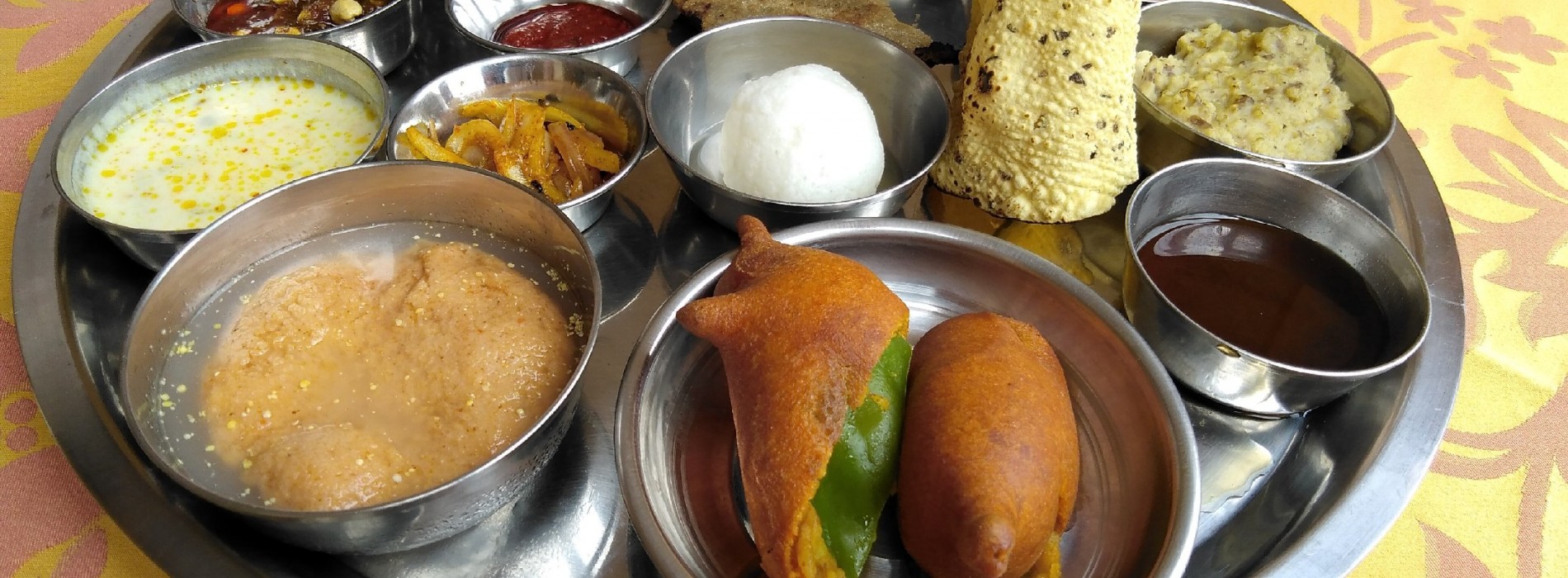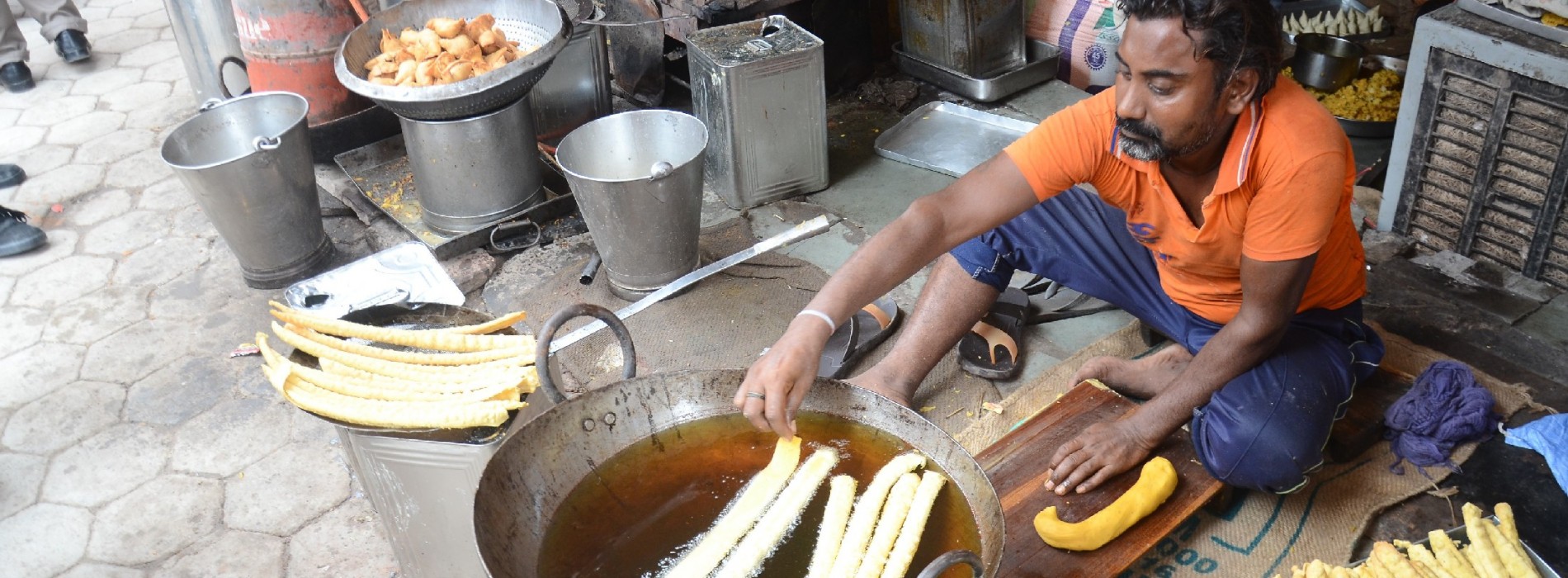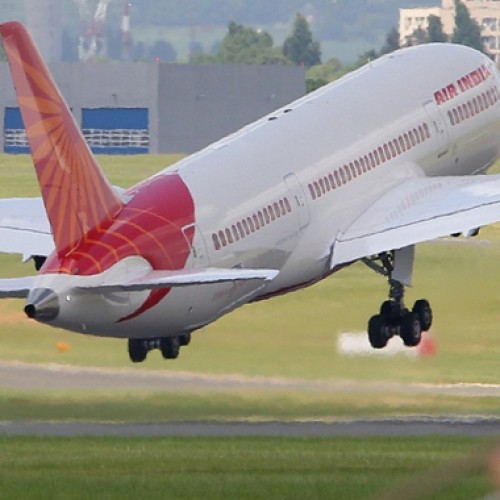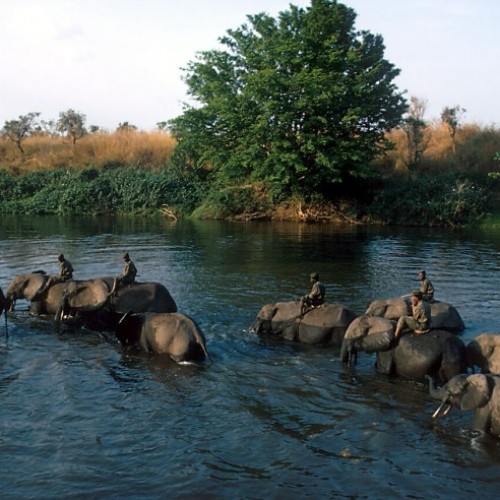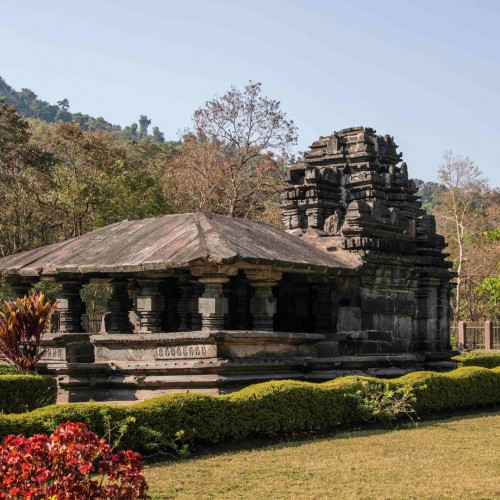A Fragrant Journey Through Bikaner
By Pradeep Chamaria
Royal effluences and culinary delights
As you walk through the sensory streets, the Rajasthani city of Bikaner reveals itself; amazing aromas fill up your nose and the spicy haze of smoke make the streets in Bhujia Bazar indistinct. All you could smell is an addictive fragrance of deep frying and spices from the hole-in-the-wall shops of freshly fried bhujias, devourable as endless savoury delights.
At Bhujia Bazar, which stretches across Bikaner’s main market area, we let ourselves be carried along by a tidal wave of bodies as they move across the streets of the bazaar. Bhujia makers line the streets of the market. The aroma of freshly fried bhujias makes me hungry, as I stand hypnotized, watching a halwai sitting on a wooden platform, skimming long thin noodles out of yellow coloured dough made of Moth Dal besan, and a lot of other ingredients including Chana Dal Besan, Asafetida, powdered cellulose, salt, red chilli powder, black pepper, cardamom, cloves, and groundnut oil. He goes on pressing the dough through a wheel sized perforated ladle and deep-frying the thin noodles in a gigantic Kadai full of vegetable oil and whisking out crispy and signature golden bhujia in a robotic manner. The wave of people pushes us as they glide by us, busy with their daily chores and in the process stopping by at the bhujia shops for their daily breakfast.
The ubiquitous odour of deep-frying envelopes the whole town, but no one is bothered as almost everyone was busy buying freshly made namkeen and mithai served hissing on hot plates, ready to be gulped in by hungry passersby. All over the city, golden-hued bhujias are packed and displayed on shelves for the hungry customer.
We weave our way past hundreds of such stalls, trying hard to stay focused and not ruin our main meals by filling up on the street snacks that hit you in the face whenever you step in the market, not just bhujia but also kachoris, ganthiyas, jalebis, ghewar, gulab jamun and over-spicy Mirchi pakoras which explode in your mouth and you douse the fire with desserts.
For your information, bhujia is a traditional Rajasthani snack eaten with almost everything and adds life to every food it’s eaten with. It is one of the most common complementing side dishes with every Rajasthani dish and is savoured throughout the day, be it the evening tea or sandwiches for breakfast. It is what makes the food a meal.
Daulat Singh ji, Manager at Hotel Gaj Kesri, who was taking us around, saw me sniffing like an animal during our visit to the famous Bhujia Bazar at Bikaner, told me not to worry, “You won’t get a blocked nose. Instead, you will cherish and love the aroma of freshly fried bhujias.” Oh, yes friends, he was so damn right; my nose was working overtime as I enjoyed the amazing aromas and the spicy haze of smoke all around in the air. All I could smell was deep-frying and spices, and I loved it.
Daulat ji picked up steaming hot, thin noodle shaped bhujias in a plate and offered me to taste and relish. I had never tasted freshly made bhujia before and they tasted scrumptious. Daulat ji insisted that I finish the whole plate and told me not to worry about trans fats, and enjoy my trip to the city of Forts, Bikaner just like a Bikaneri. He added, “Bikaneries’ daily routine is eating deep-fried, sugar-laden diet and not worry like the modern society of transfats, clogged arteries and getting sick. The climate of the area helps in digesting whatever one eats”. I couldn’t agree more.
Bhujia was first introduced to Rajasthan by Maharaja Shri Dungar Singh in 1877 in the princely state of Bikaner. Since then, bhujia has become a signature of this laid back city’s food culture and also a synonym of Bikaner. In fact, this particular dish is the calling card of the city which is famous for a lot of other delights too. For a visitor, it simply appears that Bikaner is a city where one half of the population is occupied with making bhujia and the other half with eating it.
As I walked through the bhujia bazaar, I started asking Daulat ji about the city, and he went on to augment my knowledge base about Bikaner which lies on the North-Western fringe of Rajasthan, abound in architectural splendour – the sandstone palaces and forts besides being a bhujia bastion.
We kept walking, accepting and tasting samples of different types of bhujia, ganthiyas, sugary gulab jamuns, etc. handed out by various vendors as we moved through the tangle of narrow lanes. Every shop spilled over with people eating bhujia and sipping tea in earthen pots. Our trip here coincided with Holi, the festival of colours, and the whole place had a feel of overwhelmingly earthy colours, full of life. Yet to our surprise, one stall owner remarked: “You chose a good time to visit – the city is much calmer this week!”
On the other side of the bazaar, the old town of Bikaner welcomed us with majestic forts namely the majestic Junagarh Fort, and breathtaking and grandeur mansions or Havelis as they are called here, and palaces in narrow lanes namely, Laxmi Niwas Palace (Royal Palace belonging to Maharaj Ganga Singh), Lalgarh Palace, Gajner Palace, Rikhji Bagri ki Haveli, Haveli of Bhairondan, Daga Chowk Havelis, Narendra Bhawan, Sampatlala Agarwal Haveli, and Rampuria group of Havelis, etc. which are all known for their more than 400 years old architecture splendour. The Havelis are no less than palaces and are large, magnanimous, extravagant houses complete with intricate details of jharokhas and carvings.
Daulat ji quizzed me, “Do you know Bikaner has over a thousand old mansions?” and I was totally surprised. I was bedazzled by the desert city with layers of history woven into its many forts and palaces as we continued with our explorations which made us travel through history and admired the beautiful architecture of Bikaner’s famed mansions in the old city.
Bikaner was founded by Rao Bika in 1486 and was formerly the capital of the princely state of Bikaner. This fourth largest city in Rajasthan attracts a large number of tourists every year. Bikaner brings to life everything you want from a desert town; the dust-swirled vibrancy, the grand forts, the narrow lanes of a walled city, the red stone houses and romance of the dessert with stretches of golden sand dunes, regiments of richly decorated fighting camels and mixed threads of history lingering in the air. The constantly shifting and undulating sand dunes make for a perfect backdrop to a laidback, easy-going place that is at once beautiful and straightforward.
There are few places on earth where you can see so many architectural wonders set up along with many cultural stories exist in such unison as Bikaner. It is a walled city for the senses, to get immersed in its colours, sounds, smells and tastes; a heady concoction of old world and new world surrounded by a stone wall with five gates. Walking through the narrow, labyrinthine lanes is the best way to admire the ornamental façades, cutting-edge design and the faded, ramshackle relics of the past of these grand Havelis.
The walled city is a photographer’s delight, and easily the most Instagrammed place in Rajasthan. We drift from the crowd to crowd, neighbourhood to neighbourhood, snoozing in our tongas as they come to a standstill in the traffic jams and piling into street-side bhujia shops to join locals in the daily (and often hourly) rituals of tea, tooth-aching savouries and sweets. Yes, you can explore Bikaner on your own on foot, or on a horse-driven tonga, though taxis are also available.
On the way back we come to Bhanwar Niwas which is housed in the last haveli in a narrow lane. Our humble host in Bikaner, Mr Sunil Rampuria, a descendent of the wealthy merchant class, Rampurias, is the current owner of the haveli and he wholeheartedly welcomes us inside and joins us for the traditional Marwari Thali Lunch.
Bhanwar Niwas is a magnificent building featuring highly ornamental street facades. The architecture and urban form of the building are both a response to the harsh arid climate of the region and a celebration of its building tradition, with delicately carved stone jaalis (perforated screens), stone chajjas (overhangs), and projecting jharokhas (balconies).
The lunch was a real royal treat, comprised of various curried sabzis made of Aloe Verra, Gourds, Potatoes, and traditional Gatiya curry along with various breads of Raggi, Wheat and chana besan.
Well, in one morning we enjoyed breathing the aromatic spicy fragrance of bhujia making and gulping those golden yellow fried noodles in roadside shops to sand, dust and heat of the desert of a 500 plus-year-old city to sipping sherbets made of real flower nectars in the comforts of a contemporary artistically designed room in a haveli and finally licking spicy curries from your fingers and delicious Saffron flavoured Kulfi sticks full of dry fruits.
Man, my taste buds are already watering as I just mention the names…
“Bikaner is a dynamic city,” Sunil tells us; ready for the modern developments but at the same time respecting the original soul of the city. Old and historical Havelis are now changing into heritage hotels, thereby signifying another chapter in Bikaner’s history as a new life will be poured into the oldest parts of the city. Bhanwar Niwas is already setting an example for such heritage properties. The frescoes, creamy marble and creaking doors of this age-old haveli have been lovingly preserved, joined by luxurious bedrooms, a cocktail bar, spa and tree-lined courtyard.
When it comes to exploring, I love to flow with the destination most of the times, and similar was the case here too. The echoes of Bikaner’s centuries-old history were felt almost all over the city. The city is home to some of the Rajasthan’s traditional foods scattered all over in the main market area and our afternoon snack feasting at Chotey Lal, one such shop serving amazingly tasty poori-sabzi and lassi made us overfed.
The traveller in me never wants to take a rest while at a destination, but this continuous over feeding made me want to take a short nap just like the camels dozing off on the open areas around the Havelis. And folks, you are damn right! I did stretch my body for a while on the greens near another wonder of the town, Karni Mata Temple, commonly called the Rat Temple, where rats are worshipped.
The rats were everywhere in the temple area, didn’t let me take rest even on the greens. When they started becoming over frank with and started climbing my ballooned tummy, I finally moved and to offer prayers to Karni Mata, another living form of Goddess Durga.
It was difficult to move inside the temple, the rats were all over the ground, thousands of them, sitting in circles on bowls of milk, mithai and chanas, looking sluggish and overfed – just like me, overfed on deep-fried bhujias and scores of desserts. The priest at the temple told me to be extra careful and not step and kill a rat while walking. It is a prevalent practice here for a Bhakt to offer a rat made in Gold if he happens to step on one and kill it.
Can you believe, portions of laddoos (my favourite dessert) nibbled by these rats are given to you as the most prized prasad (offerings) of Karni Mata mandir?
Can you accept and eat that? Well, at least I couldn’t even though I am an uncompromising follower of Hinduism! But there were people faithfully gulping the prasad and I stood there bowing my head to the faith they have for the goddess.
At the time of exchanging goodbyes after three days of royal pampering at Gaj Kesri Resort, I was surprised with myself. After exploring major attractions of Bikaner (at least that’s what I think) and savouring the endless delicious delights of Rajasthan, my overall weight did not change. I didn’t lose my original body shape and I guess that’s the essence of the dry air of Deserts of Bikaner and Rajasthan.
HOW TO GET THERE
Bikaner is connected by trains from all over India. Air India flies from Delhi and Jaipur to Bikaner daily. You can also drive from Delhi/Jaipur and also from anywhere in India.
You might also like
Commerical mission to Argentina in Spain
With the flight Madrid-Iguazú main novelty, INPROTUR was presented in the Spanish capital, Bilbao and Barcelona. The National Institute of Tourism (INPROTUR) developed an important trade mission in the cities of Madrid, Bilbao and
Parliamentary panel discusses issues related to Air India stake sale
A Parliamentary panel on Tuesday discussed various issues related to Air India disinvestment and civil aviation ministry’s demand for grants for the next fiscal. The meeting of the parliamentary standing
Kinshasa joins flydubai’s growing network in Africa
Dubai-based carrier to start operating daily flights to the Congolese capital from 15 April with an en-route stop in Entebbe Carrier grows network in Africa to 13 destinations in 10 countries Dubai-based flydubai



